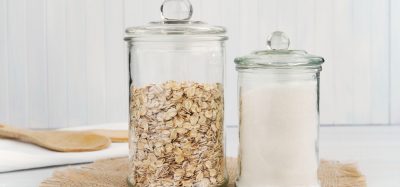Natural pest control saves apple growers £3,000 per hectare
- Like
- Digg
- Del
- Tumblr
- VKontakte
- Buffer
- Love This
- Odnoklassniki
- Meneame
- Blogger
- Amazon
- Yahoo Mail
- Gmail
- AOL
- Newsvine
- HackerNews
- Evernote
- MySpace
- Mail.ru
- Viadeo
- Line
- Comments
- Yummly
- SMS
- Viber
- Telegram
- Subscribe
- Skype
- Facebook Messenger
- Kakao
- LiveJournal
- Yammer
- Edgar
- Fintel
- Mix
- Instapaper
- Copy Link
Posted: 29 April 2025 | Ben Cornwell | No comments yet
New UK study finds wildflower strips reduce pest damage, pesticide use and costs in commercial apple orchards while boosting biodiversity.


Planting wildflowers may seem like a biodiversity boost, but for apple growers, it could also be a major financial win.
New research from the University of Reading, NIAB East Malling, Cranfield University and Syngenta has revealed that flower strips in apple orchards can save growers up to £2,997 per hectare a year by reducing pest damage and cutting back on costly chemical sprays.
The two-year study, published in the Journal of Agricultural Economics, found that wildflowers attract natural predators such as ladybirds, lacewings and hoverflies. These insects feed on pests like rosy apple aphids, which can cause significant crop losses.
Dr Charlotte Howard, lead author from the University of Reading, said:
Flowers attract helpful insects that work hard to keep pests under control. Farmers could save money while boosting biodiversity and letting nature do some of the heavy lifting in looking after their crops.”
Benefits of flower strips
The researchers compared commercial orchards with and without flower strips, tracking pest pressure and apple damage. In years when aphid infestations were high, orchards with flower strips experienced up to 32 percent less damage. Even after factoring in planting and maintenance costs, the savings reached nearly £3,000 per hectare.
Where the strips were placed made a significant difference. Wildflowers planted along the orchard edge – particularly replacing grass rather than trees – provided the highest return on investment. This approach proved more effective than government planting subsidies or the number of years the flowers lasted before needing to be replaced.
NIAB’s recent factsheet supports the findings, highlighting how flower strips can create stable habitats for beneficial insects, reduce pesticide dependency and improve pollination. Additional benefits include improved soil health, carbon capture, and stronger overall ecosystem resilience, all increasingly important to growers under pressure to meet sustainability targets.
However, Dr Howard stressed:
There’s still more to learn about all the benefits of planting flower strips.”
So, the next time you pass an orchard and see a patch of wildflowers, it could be more than just for show – it could be acting as a cost-cutting pest control strategy for the UK’s apple sector.
Related topics
Environment, Food Security, Natural, Pesticides, Research & development








